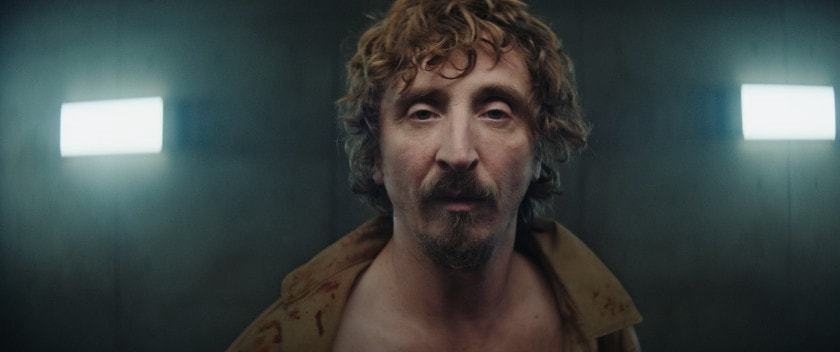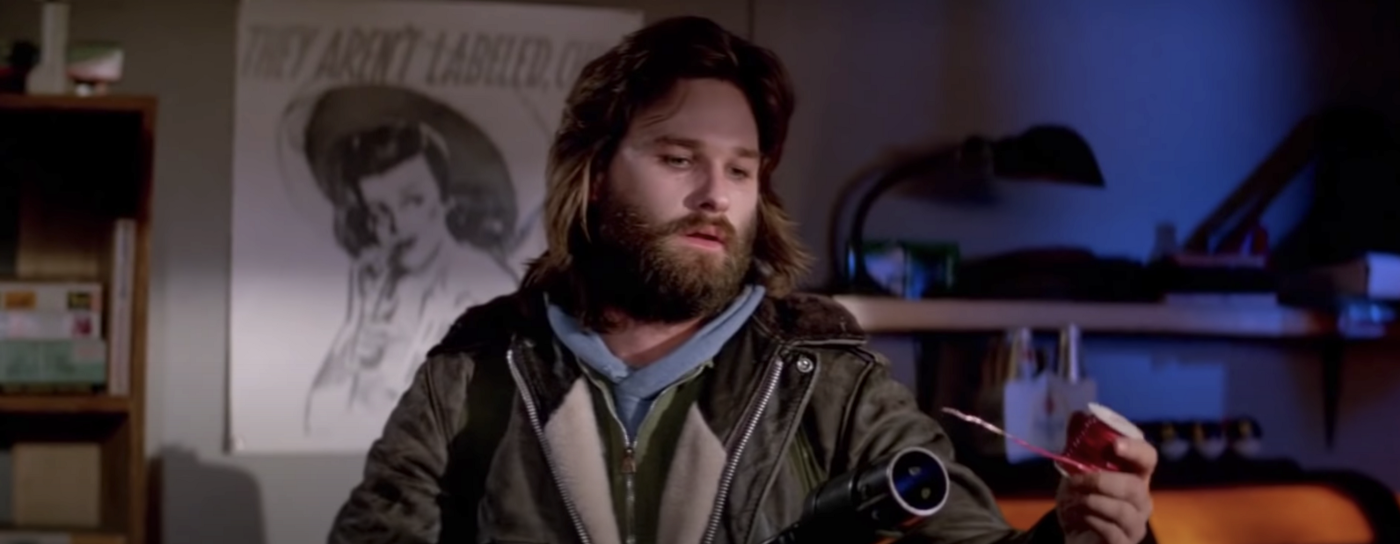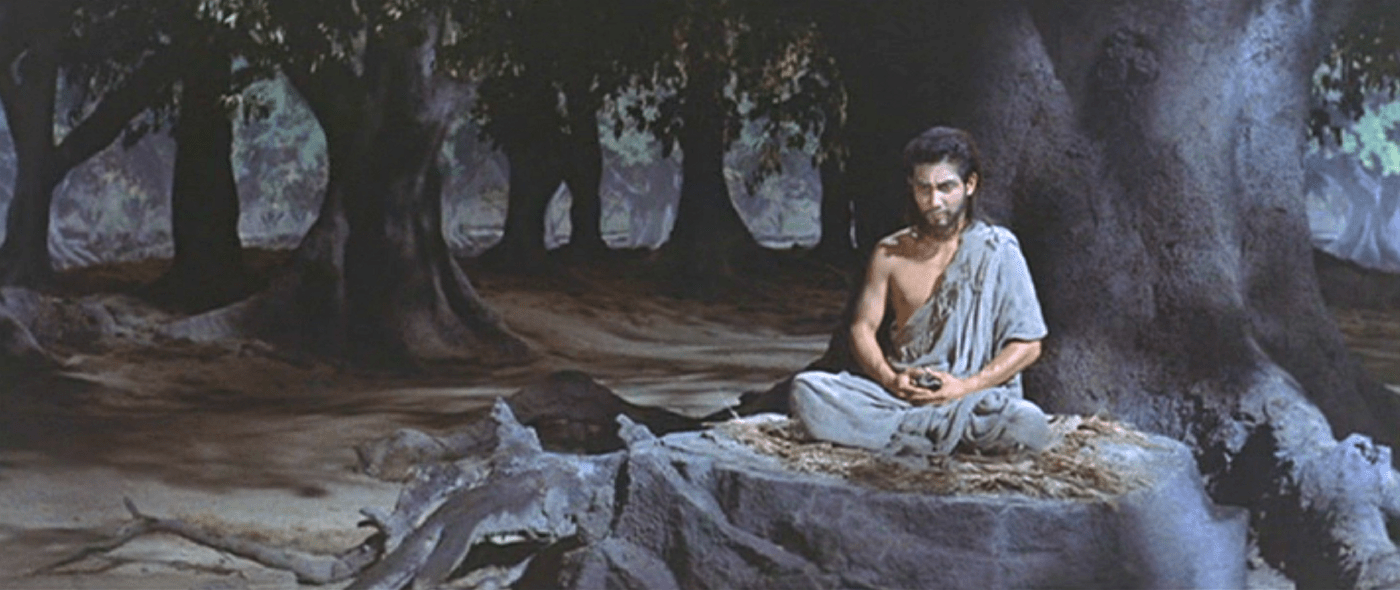
You may not have heard of Ulli Lommel, but he is one interesting, little rabbit hole that can swiftly whisk you away into a strange world of underground film, punk, pop art, and all things avant-garde. He worked a long time with Rainer Werner Fassbinder in Berlin. They made several films together like Love Is Colder Than Death (1969) and The Tenderness of Wolves (1973). Lommel also spent time in Andy Warhol’s Factory, where he made several films with Andy like Cocaine Cowboys (1979). Lommel made over 40 films in total, and starred in even more. He was in Russ Meyer’s Fanny Hill (1964) and all sorts of strange films you’ve never heard of.
He was born in Poland in 1944 and died only recently in 2017. I discovered Lommel when I randomly stumbled across his film Strangers In Paradise. Unfortunately, it’s very difficult to find any information on Strangers In Paradise, because if you type it into Google, the better-known Stranger Than Paradise by Jim Jarmusch eclipses it.
Stranger In Paradise came out in 1984. It’s a low-budget film, but not quite at the bottom of the barrel. Lommel had enough to buy a pretty elaborate lighting setup and a well-trained group of dancers. The movie is a loud, in-your-face, counter-culture, New Wave musical, and I have to say, the music is pretty good. Imagine a mixture of Blondie, Romeo Void, Missing Persons, and The Fixx. I suppose that list of bands is not too familiar to many of you, but if you were a New Wave punk in New York City in the 80s, and I know some of you are still out there, you’ll understand what I mean.

Stranger In Paradise is a combination of The Man Who Fell To Earth, Pink Floyd’s The Wall, and Edward Scissorhands. It’s the story of a group of conservative, Christian Republicans who find a cryogenically frozen Nazi mentalist. They thaw him out and use him to try and brainwash and pacify all the punks, queers, and junkies who are messing up society. It’s not entirely clear, but the Nazi ends up turning on the Christians and siding with the punks, at least I think that’s what happens.

The premise and plot may be a mess, but most of the film is music. The fashion and choreography are quintessential 80s, with aerobics outfits, angular sunglasses, tall upturned collars, and big, teased-out hairdos. The film has a lot of attitude, and not much else, but it manages to get its message across. It fits right in with Liquid Sky (1982) and New Wave Hookers (1985).

On the strength of Stranger In Paradise, I decided to watch another of his films.Looking over what was available, I chose to watch an earlier film called The Tenderness of Wolves. The order you watch a given director’s work in is, of course, important, and I suppose if you have limited information, viewing them chronologically would make sense, but I didn’t know I was entering this rabbit hole when I began.
The Tenderness of Wolves was produced by Fassbinder and written by Kurt Raab. The film was directed by Lommel. It is about as different as a movie could be from Strangers In Paradise. No one would ever guess they were made by the same man. The only thing they have in common is their focus on the marginalized fringes of society.
The Tenderness of Wolves is a loose reworking of Fritz Lang's 1931 film M. M was groundbreaking and shocking in its day, and I am sure The Tenderness of Wolves was just as shocking, if not more so, in 1973. In M, all of the rape and violence took place off-screen. Not so with The Tenderness of Wolves.

The Tenderness of Wolves is a harsh and painful film that does not shy away from its subject matter. Peter Lorre is replaced by Kurt Raab in the leading role. It’s not easy to replace Lorre, but Raab, with his shaven head and strange features, makes for a terrifying replacement. In M, we do not meet our pedophilic murderer, Hans Beckert, until the end of the film. In Lommel’s version, we meet the murderer right away. His name is Fritz Haarman, and he is not only a pedophile, but he is homosexual, as well as a cannibal. Raab and Lommel give us an outcast who is almost inhuman. A true predator, stalking society from its margins.

Both M and The Tenderness of Wolves are deeply German films. They have that dark German angst. Where other cultures might try to avoid the stygian psychological abyss, somehow the German psyche is amenable to exploring it, come what may. M came out in the Weimar years before World War II, and The Tenderness of Wolves came out afterward during the Cold War. Despite their being on either side of World War II, they still seem very similar. Both dare their audiences to gaze at the psychic turmoil so many try to avoid.
The Tenderness of Wolves is a slow, methodical portrait of a psychopath and the society he preyed on. In form, it is conventional. The cinematography, the editing, and the sound design are all what you would expect from a mainstream film. The Tenderness of Wolves belongs to The New German Cinema movement, but in 1977, Lommel left Germany and moved to America, where he met Andy Warhol. Lommel and Warhol worked on a variety of projects together and Lommel’s transformation is astounding. He made Strangers In Paradise only 11 years after The Tenderness of Wolves,and yet it comes from a completely different stylistic world. It is a slapdash, ad hoc outburst of anarchic energy like much of the art, film, and music that sprang forth from The Factory.

I decided to watch Lommel’s The Boogeyman next. Lommel and his new wife Suzanna Love made The Boogey Man in 1980. It’s a thoroughly disappointing film. The cinematography is completely ordinary. It looks like every other low-budget horror movie from the time. Flat lighting, utilitarian composition, filmed almost entirely at medium range, except for the occasional close-up to punctuate distress. There is some handheld POV footage with heavy breathing a la Friday The 13th, which came out the same year. Putting the viewer in the shoes of the murderer didn’t work in Friday the 13th, and it doesn’t work here. It removes the fear by seeding control to the audience.
Lucio Fulci is also an obvious influence. There are those same clusters of synthesizer chords and gruesome death scenes. Lommel is not as heavy-handed as Fulci, but the influence is unmistakable. As if The Boogeyman isn’t derivative enough, it also has an awful lot in common with John Carpenter’s Halloween, which came out two years earlier.

The dialogue is bad, the acting is bad, and the plot is predictable, but if you strain hard enough, you can see some German expressionism in there somewhere. Suzanna Love plays Lacey, a young woman tortured by a traumatic event from her past. The film begins with this event, in which we see her and her brother spying on their parents while they play kinky sex games. The two children are caught peeping and the father ties the brother to his bed and beats him. Little Lacey gets a knife from the kitchen to cut her brother loose, but once the brother gets ahold of the knife, he uses it to murder his father. It’s a promising start, full of libidinal anguish and tortured psyches, but it goes nowhere.

Lommel and Love would go on to release two sequels to Boogeyman which I will not be wasting my time watching. At the very least, having watched The Boogeyman, I can say that I have watched yet another movie from the UK’s Video Nasties List.
The same year Lommel made The Boogeyman, he also made Blank Generation, so I watched that next. It’s a relatively straightforward depiction of a young punk rocker making his way in New York City. It’s not clear when the film is supposed to take place, but the rocker is played by Richard Hell. Hell was a pioneer of punk in the late 70s. The film takes its name from the album he made with Voidoids in 1977.
Stranger In Paradise was a punk movie about rebellion. It was radical in both form and content. Blank Generation may feature a punk protagonist, but it is less radical in its presentation. It’s not a completely conventional film. It has that gritty New York indie feel, but the story is relatively straightforward. It’s a boy meets girl, boy loses girl, boy gets girl back plot, with the NYC punk scene as its backdrop. It’s not an exciting film, but there is something sincere and direct about the narrative and the characters are compelling.

Richard Hell pretty much plays himself. He is a young musician who is troubled by the punk world. He is worried that his audience (and possibly he himself) is getting jaded. Nada, a French reporter, is in New York to interview him. They have a torrid affair, made turbulent by their independent searches for meaning and identity.
There is an interesting moment when Nada manages to get an interview with the always cagey Andy Warhol. The part of Andy Warhol is played by Andy Warhol (a sentence that could describe him in many ways). She asks him, “I’d like to know what you think about a sentence of Godard who says, ‘Cinema is a place for crime and magic.’” Warhol smirks and replies, “Well, I still don’t understand the crime part of the question, but I always think it… about the magic part of the question… it really shows magic, uh, you know, especially when it shows people. Some people have that magic that when a camera goes on you, there’s an extra energy or something. For some people, beautiful people, it makes such a difference to get that extra magic on the screen.” Warhol has never given a straight answer to anyone, but the discussion is centered around vanity and fame, which seem to be the central issue in the film.

In real life, Richard Hell was never an outrageous punk. His hair wasn’t dyed, he didn’t wear tons of makeup or have a bunch of piercings. His aesthetic is best described as grunge, even though that term had yet to be coined. Hell’s songs were loud and driven by power chords, but the lyrics were personal and sincere. He wrote several books of poetry during his life. The film seems like an effort to capture the full dimensionality of him as not only a musician, but as a person.
With each movie I add to this article, I find it increasingly more difficult to unite Lommel’s filmography into a coherent whole. His preference for people and stories that come from the margins of society isn’t reflected in The Boogeyman, or in his 1982 film Brainwaves. Brainwaves had Tony Curtis and Vera Miles in it, as well as Keir Atwood Dullea, who played Dave in 2001: A Space Odyssey, but Brainwaves is an empty, lifeless failure. It’s a pointless science-fiction thriller that simply has nothing to offer.

Marcel Duchamp once wrote an essay about how artists shouldn’t have a recognizable style. He said that having a discernible style is just a marketing ploy allowing people to recognize a Picasso or a Rembrandt as a branded work of art. Duchamp believed a truly creative artist would be unpredictable and inconsistent. If I had stopped after watching Stranger In Paradise (1984) and The Tenderness of Wolves (1973), I might have thought Duchamp’s ideas applied to Lommel’s work, but after seeing The Boogeyman (1980), Blank Generation (1980), and Brainwaves (1982), I’m almost ready to give up. Looking at the list now, I realize I ended up watching the films in descending order of quality. Stranger In Paradise is the strongest, even though it is the most disordered and wacky. It was Stranger In Paradise that set this article in motion.

Even with my impression of Lommel rapidly degenerating, I thought I ought to sample a more recent film, so I watched Lommel’s Daniel The Wizard (2004). Watching Daniel The Wizard is a perfect way to end my encounter with Ulli Lommel. It was so bad, there simply was nowhere else to go. It’s Neil Breen bad, but far less entertaining. Breen films are so bad they are good, but Daniel The Wizard is just teeth-grindingly tedious. It’s a magical pop opera about the real-life performer Daniel Küblböck. In an interview, Lommel describes his interest in the subject. “I know that from my childhood, in Germany, we were taught this way: You must not do certain things. You have to behave yourself. And now there is Daniel, and he isn't willing to take those fixed bourgeois roles. He creates his own role. He breaks taboos, makes himself up, dresses like a girl. He cries, is clownish, is hysterical. For short: He doesn't behave himself. And because he does this in public, I think some consider this as a salvation and love him, and others can't bear this and hate him.” That’s all well and good, but after only 13,834 people came to see it in theaters in Germany, it was pulled out of circulation. For a long time, it was the lowest-ranked film on IMDb.

It’s tempting to credit Lommel’s two best films to his association with Fassbinder and Warhol. To be fair, I’ve only watched 6 out of Lommel’s 40 films, but I am unwilling to venture further. You never know what you are in for when you dive into a rabbit hole. It’s disappointing that Lommel lost his way, but if you follow a rabbit hole long enough, you risk unearthing the chamber where it shits.

If you enjoyed this article you might also enjoy this - https://filmofileshideout.com/archives/dave-markeys-two-punk-movies-about-the-lovedolls/



